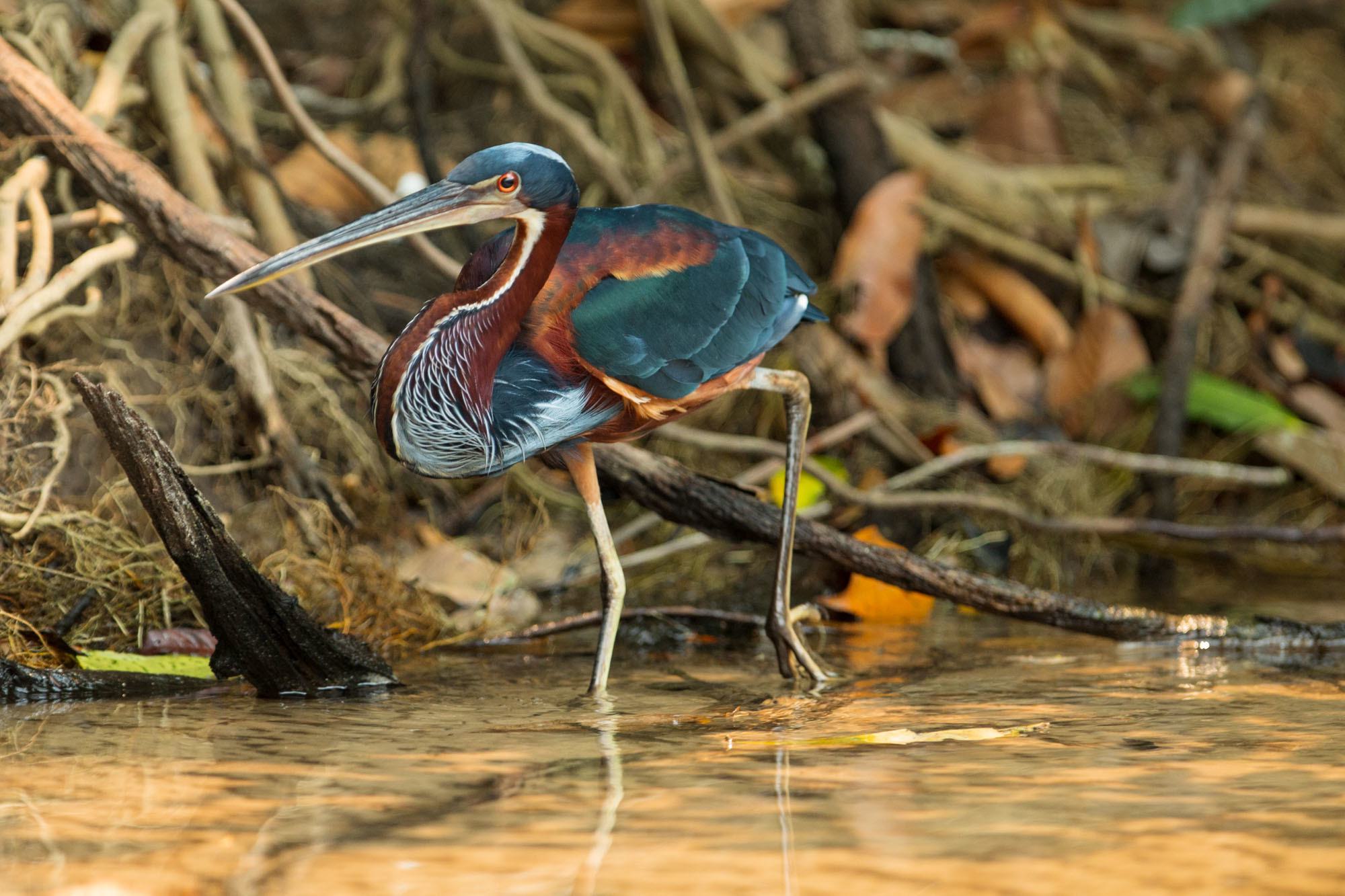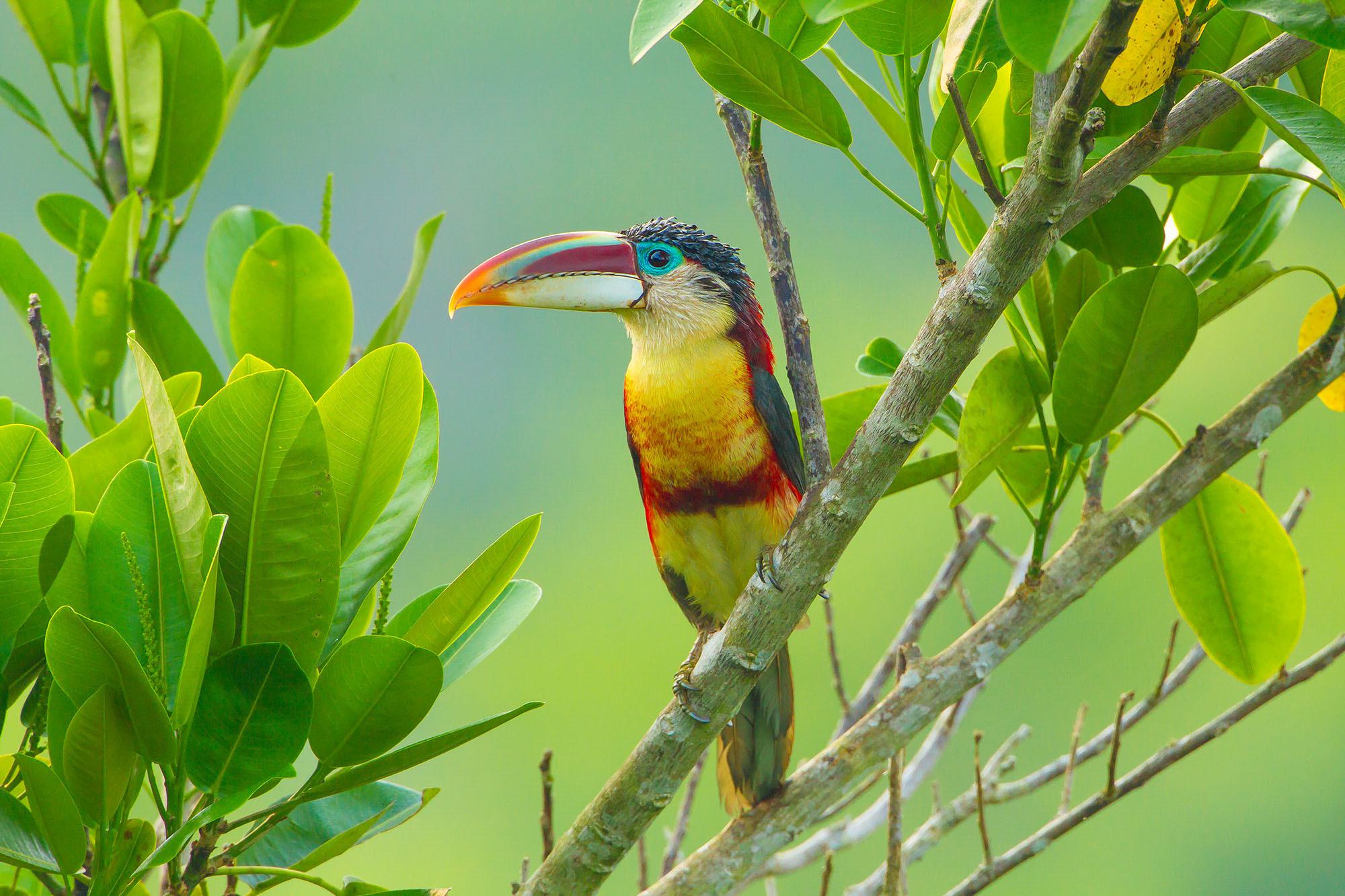AVIFAUNA
SO FAR, 595 BIRD SPECIES HAVE BEEN REGISTERED AND CATALOGUED WITHIN THE CRISTALINO AND ALTA FLORESTA AREA, WHICH REPRESENTS ABOUT 50% OF ALL THE BIRDS IN THE AMAZON AND ABOUT 1/3 OF THE ENTIRE BRAZILIAN AVIFAUNA.
The region is the habitat of seldom-seen species, including many range-restricted Brazilian endemics found only between the rivers Tapajos, Madeira and Xingu, since the barrier effect of these rivers causes the dispersion of some species to be inhibited. In addition, differing soil types in the catchment areas, responsible for the ‘white coffee’ water of the River Teles Pires and the ‘black coffee’ water of the River Cristalino, enhance the overall bird diversity. Highlights among these are bamboo-specialists like the Rufous-capped Nunlet (Nonnula ruficapilla), Manu Antbird (Cercomacra manu), Chestnut-throated Spinetail (Synallaxis cherriei), Peruvian Recurvebill (Simoxenops ucayalae), Dusky-cheeked Foliage-Gleaner (Anabazenops dorsalis), Ornate Antwren (Epinecrophylla ornata), and Rose-breasted Chat (Granatellus pelzelni).
Larger birds in the area include the Red-throated Piping Guan (Aburria cujubi), Razor-billed and Bare-faced Curassow (Pauxi tuberosa and Crax fasciolata, respectively), Zig-zag and Agami Heron (Zebrilus undulatus and Agamia agami, respectively), Amazonian Umbrellabird (Cephalopterus ornatus), and many Jacamars, such as the Blue-necked, Bronzy, Paradise and Great Jacamars (Galbula cyanicollis, Galbula leucogastra, Galbula dea and Jacamerops aureus, respectively). Puffbirds of special interest include the Brown-banded, Striolated, Collared, Rufous-necked, White-necked, Pied, Spotted, and Swallow-winged Puffbirds (Notharchus ordii, Nystalus striolatus, Bucco capensis, Malacoptila rufa, Notharchus hyperrhynchus, Notharchus tectus, Bucco tamatia and Chelidoptera tenebrosa, respectively).

Agami Heron (agamia agami).
The forest understory is populated by a variety of Antbirds, Antthrushes and Antpittas, which compete in the same habitat with fascinating species of Manakin, such as Blue-backed, Red-headed, Snow-capped, Fiery-capped, and Flame-crowned Manakins (Chiroxiphia pareola, Pipra rubrocapilla, Lepidothrix nattereri, Machaeropterus pyrocephalus and Heterocercus linteatus, respectively). Cuckoos such as the Black-bellied, Pavonine, Ash-colored and Dark-billed Cuckoos (Piaya melanogaster, Dromococcyx pavoninus, Coccycua cinerea and Coccyzus melacoryphus, respectively) are also found here.
On the riverbanks brightly colored Kingfishers, such as the Ringed, Amazon, Green-and-rufous, and American Pigmy kingfishers (Megaceryle torquata, Chloroceryle amazona, Chloroceryle americana, Chloroceryle inda and Chloroceryle aenea, respectively) can usually be found.
Living in the canopy overhead one can find six stunning species of Macaw – the Scarlet, Blue-and-yellow, Chestnut-fronted, Red-and-green, Blue-winged and Red-bellied Macaws (Ara macao, Ara ararauna, Ara severus, Ara chloropterus, Primolius maracana and Orthopsittaca manilata, respectively) – joined by noisy flocks of Parrots, such as the White-bellied parrot (Pionites leucogaster), Kawall’s Amazon (Amazona kawalli) and the Orange-cheeked, Vulturine, Blue-headed and Red-fan Parrots (Pyrilia barrabandi, Pyrilia vulturina, Pionus menstruus and Deroptyus accipitrinus, respectively), as well as magnificent parakeets such as the Madeira and Crimson-bellied Conures (Pyrrhura snethlageae and Pyrrhura perlata), the Dusky-billed Parrotlet (Forpus modestus),and the White-eyed and Golden-winged Parakeets (Aratinga leucophthalma and Brotogeris chrysoptera). Other birds you are likely to find living high in the tree tops include the Spangled, Pompadour and Purple-throated Cotingas (Cotinga cayana, Xipholena punicea and Porphyrolaema porphyrolaema, respectively), Bare-necked Fruitcrow (Gymnoderus foetidus), Paradise, Opal-rumped and Red-billed Pied Tanagers (Tangara chilensis , Tangara velia and Lamprospiza melanoleuca, respectively), Long-billed Wren (Thryothorus longirostris) and White-browed Purpletuft (Lodopleura isabellae). And colorful and charismatic Aracaris, such as Curl-crested and Red-necked aracaris (Pteroglossus beauharnaesii and Pteroglossus bitorquatus) are often seen tucking into the fruit of palm trees.

Curl-crested Aracari (pteroglossus beauharnaisii).
Among the night birds you might see are the Black-banded and Crested Owls (Ciccaba huhula and Lophostrix cristata), the Amazonian pygmy-owl (Glaucidium hardyi) and the Long-tailed and Great Potoos (Nyctibius aethereus and Nyctibius grandis). Meanwhile, early in the morning or at the end of the afternoon, both Harpy and Crested Eagles (Harpia harpyja and Morphnus guianensis) are sometimes spotted.
GALLERY
Take a look at our collection of bird photos.
